- Cheri Fancsali
- https://steinhardt.nyu.edu/people/cheri-fancsali
- Deputy Director
- The Maker Partnership: A research practice partnership
- https://steinhardt.nyu.edu/research-alliance/research/projects/maker-partnership
- Research Alliance for NYC Schools at NYU, New York University
- Stephen Gillman
- http://www.maker-state.com
- Executive Director
- The Maker Partnership: A research practice partnership
- https://steinhardt.nyu.edu/research-alliance/research/projects/maker-partnership
- MakerState
- Roger Horton
- Managing Director
- The Maker Partnership: A research practice partnership
- https://steinhardt.nyu.edu/research-alliance/research/projects/maker-partnership
- Schools That Can
- Sarah Klevan
- Senior Researcher
- The Maker Partnership: A research practice partnership
- https://steinhardt.nyu.edu/research-alliance/research/projects/maker-partnership
- Learning Policy Institute
- Zitsi Mirakhur
- Assistant Professor
- The Maker Partnership: A research practice partnership
- https://steinhardt.nyu.edu/research-alliance/research/projects/maker-partnership
- University of Kentucky, Research Alliance for NYC Schools at NYU
- Edgar Rivera Cash
- New York University
- The Maker Partnership: A research practice partnership
- https://steinhardt.nyu.edu/research-alliance/research/projects/maker-partnership
- Research Alliance for NYC Schools at NYU
Public Discussion
Continue the discussion of this presentation on the Multiplex. Go to Multiplex






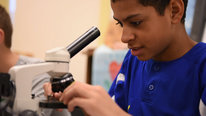
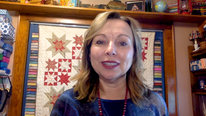
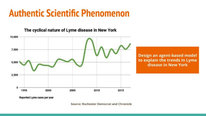
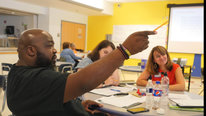
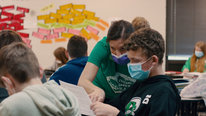
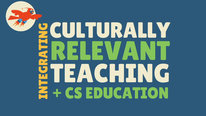
Cheri Fancsali
Deputy Director
Hello and thank you for visiting our video about the Maker Partnership. The Maker Partnership is a Research Practice Partnership that designed and tested a teacher capacity building model for integrating CS and computational thinking into elementary science.
Please let us know if you have questions about our work. We would also love to know if you are doing similar work.
DeLene Hoffner
Zitsi Mirakhur
DeLene Hoffner
Lead Teacher
I enjoyed your video. Your Maker Partnership seems very successful. Can you tell me what your top learning has been for your partnership?
Zitsi Mirakhur
Cheri Fancsali
Cheri Fancsali
Deputy Director
Thank you for your note! We are still analyzing data and writing up our results, but one of the key findings was that our model of PD and supports provided teachers with the knowledge they need to integrate CS/CT into science. Characteristics of in-person PD that teachers found to be particularly effective were: active learning, modeling of lessons and pedagogical approaches, guided practice in learning new CS/CT skills, and time for teacher planning and collaboration. Teachers also benefitted from one-on-one coaching, and access to coaches via phone and email as needed.
Teachers reported that one of the biggest challenges to integrating CS/CT into science instruction is finding time within students' schedules to fit in CS/CT activities. Our elementary students often have only a few periods per week of science, and teachers need to get through a lot of material in those times.
What's been your experience with integrating CS/CT into subject areas?
DeLene Hoffner
Lead Teacher
My experience it is very effective to integrate CS/CT into other subject areas. When you look at STEM, it isn't always a "T" technology lesson to tie that into STEM. Best practices would be a natural integration with science, engineering and math so it may be use of CS to represent data, or create a model using a program but it also can be use of other technologies that are available from simple machines to more complex equipment like a 3-D printer.
Zitsi Mirakhur
Cheri Fancsali
DeLene Hoffner
Cheri Fancsali
Deputy Director
Great points! In this project, we integrated CS/CT into science through tools like Scratch. For example, students built Scratch programs that modeled/demonstrated scientific phenomena like the water cycle.
Myriam Steinback
Independent Consultant
You mention a really important challenge: incorporating CS/CT into science into elementary education when time for science is limited and in some cases doesn't exist... how have you been able to make the case to schools for the importance of your goal? I'm thinking that particularly in this time of extensive virtual learning, and the many practical uses of maker spaces for student learning, this would be such an important part of student learning...
Zitsi Mirakhur
Cheri Fancsali
Cheri Fancsali
Deputy Director
I agree! Our practice-side partners (Schools That Can and MakerState) were very intentional about showing teachers the alignment between CS/CT skills and practices, NGSS, and the concepts and skills taught through the school science curriculum for each lesson. They also met with school administrators to make the case that these practices reinforced each other. Thank you for your comment!
Myriam Steinback
Roger Horton
Managing Director
You ask an excellent question! As Cheri noted, we made a point in our PD sessions with teachers to demonstrate how the CS & CT skills students learn when coding with Scratch, and building simulations of natural phenomena using Scratch, align very well with NGSS. Students' coding projects directly empowered students to apply their science learning with plenty of room for creativity and collaboration. We focused on making those connections with teachers to ensure they saw the benefits and were excited to build the CS/CT into their science teaching. While we did meet with administrators and shared regular updates, one lesson we learned is that over a two-year program it is important to get administrators to recommit to the program over the intervening summer, even if they had already committed to taking part for the full two years.
Cheri Fancsali
Josie Melton
Post-Doctoral Researcher and Senior Instructor
Thanks for sharing! The PD model seems very supportive in preparing teachers to implement pedagogies and activities that are new to them. I am wondering if there are plans to follow participants after project funding has ended to see if they are still finding time to integrate these CS/CT activities?
Also, I am curious about what grade levels project participants taught - Was there a range of K-5 teachers, or mostly upper elementary grades represented?
Zitsi Mirakhur
Cheri Fancsali
Cheri Fancsali
Deputy Director
Thank you for your questions! The teachers in our project taught grades 3 to 5. Some were subject-area or cluster teachers (e.g., science/technology/CS teachers) and some were grade-level teachers who taught all subjects. Unfortunately, we don't have funding to follow teachers this year, though I agree it would be really important to do so. Our RPP is currently seeking funding to expand our work to include schoolwide integration of CS/CT into subject areas.
Josie Melton
DeLene Hoffner
Lead Teacher
Bravo to all for this wonderful discussion! Thank you for viewing and adding your questions and expertise. Please share the STEM Showcase with others so they can participate in the discussion too. Let's get more educators involved in viewing these top projects. Voting and discussion ends on May 18th at 8PM EDT. (but viewing is open anytime) https://stemforall2021.videohall.com/
For presenters, what are your next steps going forward?
Roger Horton
Managing Director
Thanks DeLene. The analysis of the data we gathered in the Maker Partnership continues, and our RPP is currently seeking funding to expand our work to include school-wide integration of CS/CT into subject areas.
Emilie Oesterlin
Hi, I really enjoyed watching your video! While watching, I noticed the use of some small robots, would you be able to tell me what those are? In our project we also use robots and I would love to look more into these!
Roger Horton
Managing Director
Sure, Emilie. Those are Ozobots! We had a great time with them - definitely encourage you to check them out. They can be used for both "physical" coding using colors and with block-based commands.
Emilie Oesterlin
Hi Roger. Great, thank you so much! I will definitely check them out. Very cool!